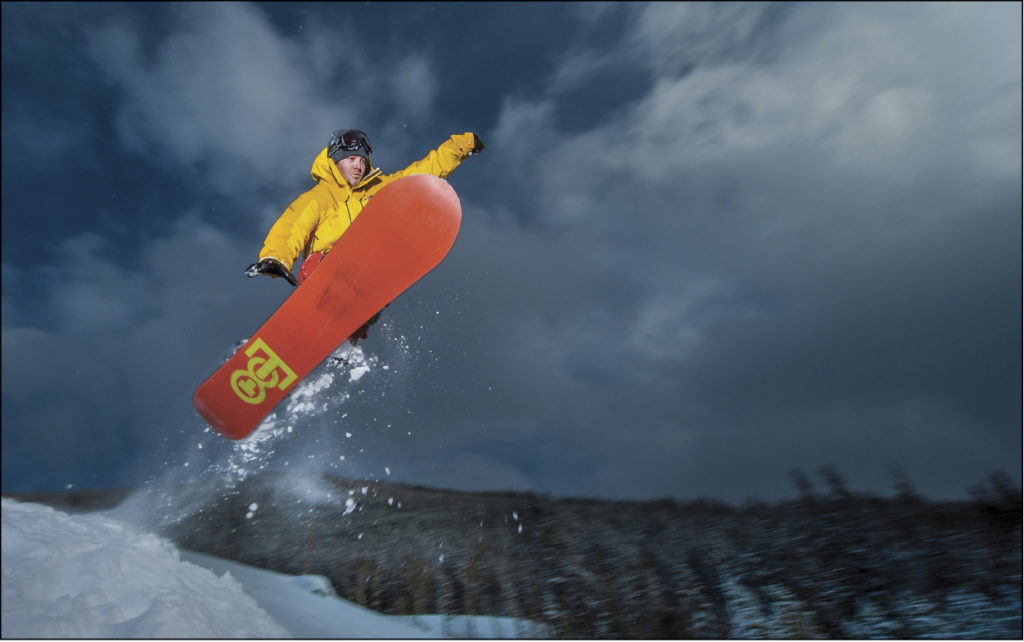If you’re shooting action sports, like this snowboarder (or even just your kid on a bike or skateboard), and you want to add a motion effect, so the background has a motion blur, but your subject is crisp and frozen, here’s what ya do: First, you’ve probably figured by now, to get that motion, you’re going to use a slow shutter speed. If your subject is moving quickly (like on a bike or they’re jumping over hurdles on a track), start around 1/10 of a second. You’re basically trying to match the speed of the shutter to the speed of your subject. Next, set your f-stop using the meter inside your viewfinder and raise your f-stop to where it shows you have a proper exposure (I imagine this will be around f/11 or higher, but of course, it all depends on the light where you’re shooting). Now, aim at your subject and track right along with their movement (this technique is called panning). As the subject passes by, swivel your hips as you track them, keep your focus point on their chest (if possible), and take the shot. Keep panning for a second or two after you take the shot—don’t stop panning as you take the photo, keep the panning going for a sec. Keeping the shutter open longer like this will make the background very blurry, like in the trees in the lower-right corner above (the slower the shutter speed, the blurrier the background will appear), and then the burst of light from your flash will freeze and light your subject (don’t set the flash power too high—you need a short flash duration, so it freezes the motion). Getting these shutter speed, f-stop, and flash power settings right will definitely take a few test shots, and a few tweaks to those settings, but that’s what the little LCD monitor is for on the back of your camera. If there’s not enough blur, lower the shutter speed. If it’s too bright, raise your f-stop (go to f/16 and try again). If the flash is too bright, lower the power. You know the drill by now.

© Scott Kelby
Excerpted from Scott Kelby’s The Flash Book: How to fall hopelessly in love with your flash, and finally start taking the type of images you bought it for in the first place.






